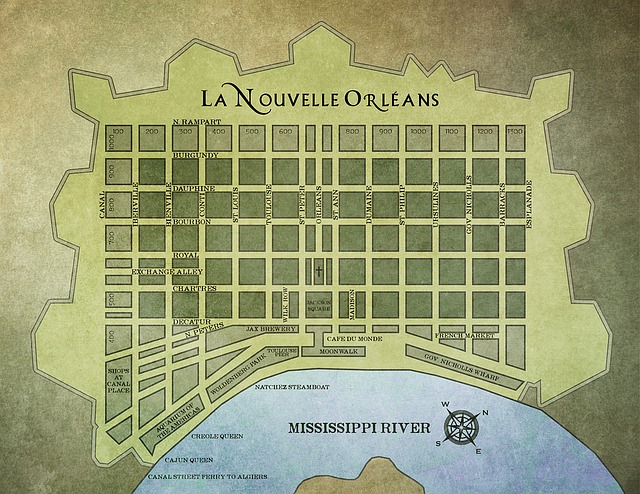In discussing historic preservation with a friend recently, I was reminded of my trip to New Orleans’ French Quarter last year. As the oldest still-intact neighborhood in the U.S., its character and city planning is largely identical to what it was 300 years ago. Sure, buildings have been upgraded and advanced construction standards and materials have been applied, but the area’s scale and courtyard theme is the same, and determined consideration for historic preservation has been incorporated into each design issue.
The French Quarter is located just to the east of the Mississippi River where the river diverts for shipping. As I walked up and down the streets taking in the neighborhood’s feel, look, activity and people, I noticed there were numerous zones designated for each purpose: Music, food (local and tourist), art, high- and low-end living units, hotels, specialty shops, professional services, and support services each have their own distinct district within the Quarter. Music and entertainment abound in the streets, which can be a bit hazardous at times. The roads in the French Quarter are all one-way and are the only means of vehicular circulation. So when you’re out, taking in the great jazz ensembles, keep one ear on the band and one on the street!
Courtyard living has always been a general rule here in this hot and wet climate and these quaint outdoor spaces are also used dining, parking, entertainment, gardens and any other use you can think of. Narrow side yards, no front yards and shared courtyard experiences are the norm. All of the spaces are tight, with the scale the buildings generally much smaller than in most urban areas. Everyone lives in very close proximity to each other.
Each building in the French Quarter has its own character—color, balconies, railings, landscaping, and roof lines are each unique—yet nothing seems new or totally out of place. In the spirit of historical preservation, there is a great movement to keep the basic scale and design the way it was in the past, though how far in the past is open to interpretation depending on the group of preservationists. As is typical, only a small part of the population is interested in planning the urban fabric of this community, and it is these activists who have the most say.
If you were on the board to set the rules for historic preservation, what rules would you endorse? The discussions on this topic fly in all directions. If a building was modified 200 years ago is that what the rest of the structure should look like? What about 100 years ago? At what point do details, color and building lines need to match those of the past?
I like the rule of thumb that scale is the most important aspect of this discussion. Material, construction means and methods change with time, and the standard of care relating to current population use needs to keep adjusting. Courtyards should stay, and streetscape balconies, railings and roof lines should be maintained. Paint colors change over time, so exact colors are as important as the hue, and design colors should be maintained.
Protecting history without stemming progress is a tricky game. The structures that served as quarters for slaves in this area 300 years ago have been preserved in scale, an important measure. On the other hand, maintaining historical preservation presents a significant challenge to accessibility. Narrow, raised sidewalks that become very slippery when wet, raised buildings and very tight spaces translate to obstacles for many. Should no-slip squares be added to sidewalks, or would these detract too much from the historical feel and character of the French Quarter? No doubt this will be an ongoing issue as we seek ways to allow enough change to serve current generations, while preserving scale and individuality.
{gallery}blog/french quarter{/gallery}
